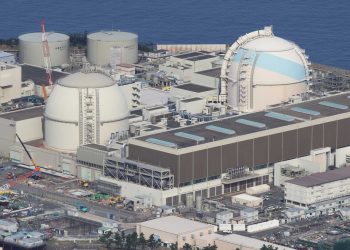,
Moscow: As everyone knows, the level of technical equipment determines the army's combat readiness. Until now, Russia's limited resources prevented it from overhauling military equipment, most of which was developed over 20 years ago. However, the situation has been gradually improving, and increased defense spending has largely facilitated Moscow's efforts to supply its Armed Forces with modern weaponry and equipment.
Michael Maples, director of the Pentagon's Defense Intelligence Agency, recently said the Russian Army's combat and theater-level training is now at its highest since the break-up of the Soviet Union. The United States is somewhat concerned because the Russian Defense Ministry is focusing on rearmament, modernization of available weapons and efforts to revive the defense industry. This only proves that the Russian Armed Forces have now started improving.
On February 7, Russia's Deputy Prime Minister and Defense Minister Sergei Ivanov addressed the State Duma, the lower house of parliament, at the Government Hour and said his Ministry would receive 821 billion rubles ($30.98 billion, or Euro 23.87 billion) in 2007. This is a great improvement on 2001, when Russia's defense budget stood at just over 214 billion rubles ($8.08 billion, or Euro 6.22 billion).
Russian defense spending still accounts for 3% of the country's GDP. The Armed Forces are spending more on development, and this trend will persist in the future. Such allocations, which totaled about 44% of the defense budget in 2006, will increase to 50% by 2011. Most of this money will be used to buy large batches of weaponry and military equipment.
The 2007 state defence order stipulates 300 billion rubles ($11.32 billion, or Euro 8.72 billion), of which over 144 billion rubles ($5.43 billion, or Euro 4.19 billion) will be spent on the acquisition of new weapons.
For instance, the Armed Forces are to buy 17 inter-continental ballistic missiles, four spacecraft and four launch vehicles. There are plans to re-equip one Strategic Air Command squadron, six Air Force and helicopter squadrons, as well as seven tank and 13 motorized-rifle battalions.
There are also large allocations for purchasing, repairing and upgrading telecommunications and troop-control systems, artillery pieces and anti-tank guided missiles, airborne infantry fighting vehicles and other motor vehicles.
As for long-term prospects, the 2007-2015 State Armament Program, due to receive almost 5,000 billion rubles ($188.68 billion, or Euro 145.35 billion), stipulates for a complete re-equipment of Russia's strategic nuclear forces. The Defense Ministry plans to commission 34 silo-based missile launchers and command centers and 66 mobile Topol-M ICBM systems, as well as to increase the number of strategic bombers.
The Strategic Air Command is to operate a total of 50 Tupolev Tu-160 Blackjack and Tu-95 Bear missile carriers.
There are plans to build and commission up to eight Mk 955/955A strategic missile submarines, to develop space-based reconnaissance, telecommunications, data-relay, mapping, surveying, early-warning and troop-control systems.
It is intended to complete launch facilities for orbiting Angara and Soyuz-2 rockets, to fully restore the early-warning radar configuration, and to boost the Air Defense Force's combat potential by 20%.
The Russian Army is to fully re-equip 40 tank battalions, 97 motorized-rifle and 50 paratrooper battalions. Five missile brigades are to receive state-of-the-art Iskander-M tactical missile systems. Two multiple-launch rocket system (MLRS) regiments are to get the revamped Uragan (Hurricane)-1M MLRSs.
In addition, 116,000 motor vehicles will be purchased.
The Navy is to receive 31 new warships.
In all, about 45% of available Army and Navy military equipment will be replaced under the new armament programme.
The incipient Federal Agency for the Procurement of Weapons, Military and Specialized Equipment and Material Resources is to play an important part in this process.
The reorganized Defense Industry Commission now oversees both the Defense Ministry and Russia's defence industry with good results. This concept has improved coordination between military-equipment suppliers and their clients.
Sergei Ivanov discussed military development and its prospects, efforts to improve the combat-training system, and to enhance the social security of military personnel and their families. He also spoke on the Defense Ministry's interaction with different public organizations.
It is obvious that Russia's theoretical opponents are worried about its enhanced defense capability, but this only confirms the fact that Ivanov's statements are not a mere assertion.
At the same time, it should be noted that Russia spends a lot on defensive weapons and equipment in line with its military doctrine. Consequently, the West should not fear Russia's upgraded defence potential because this, rather than a reversion to the Cold War, matches common security interests.
But practical experience shows that some Western politicians would like to see Russia as a theoretical rival, rather than a strategic partner.
The opinions expressed in this article are those of the author and may not necessarily represent the opinions of the editorial board.









